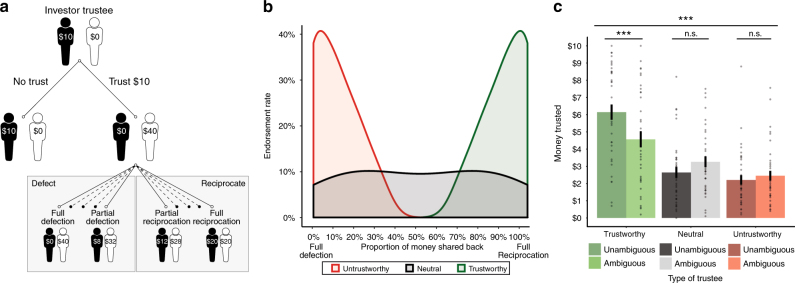Fig. 2.
Experiment 2 task structure and results. a In the trust game, subjects (investors) were endowed with $10 and decided whether to share their money with the trustee, knowing that the money entrusted was quadrupled once sent to the trustee. If subjects entrusted their money, the trustee could reciprocate any proportion of money from returning nothing ($0) to the maximum amount (i.e., double the invested money). The decision tree depicts an example of a decision to trust and the various possibilities the trustee could choose from, from full defection to full reciprocation. b Each trustee was yoked to a different reciprocation algorithm: trustworthy trustees typically reciprocated, the neutral trustees were equally likely to defect or reciprocate (e.g., a uniform density across all possibilities); untrustworthy trustees typically defected. The proportion of money shared back refers to the maximum reciprocation (i.e., double the invested money. c A repeated measures ANOVA reveals subjects were sensitive to the trustworthiness of the trustee, entrusting the most money to trustworthy trustees and the least money to untrustworthy trustees. This effect was modulated by ambiguity levels associated with the trustees (whether feedback was presented), such that greater ambiguity had a negative effect for the trustworthy trustees, and no effect for neutral and untrustworthy trustees. Asterisks indicate significant differences (***p < .001). Error bars represent ± 1 standard error of the mean

